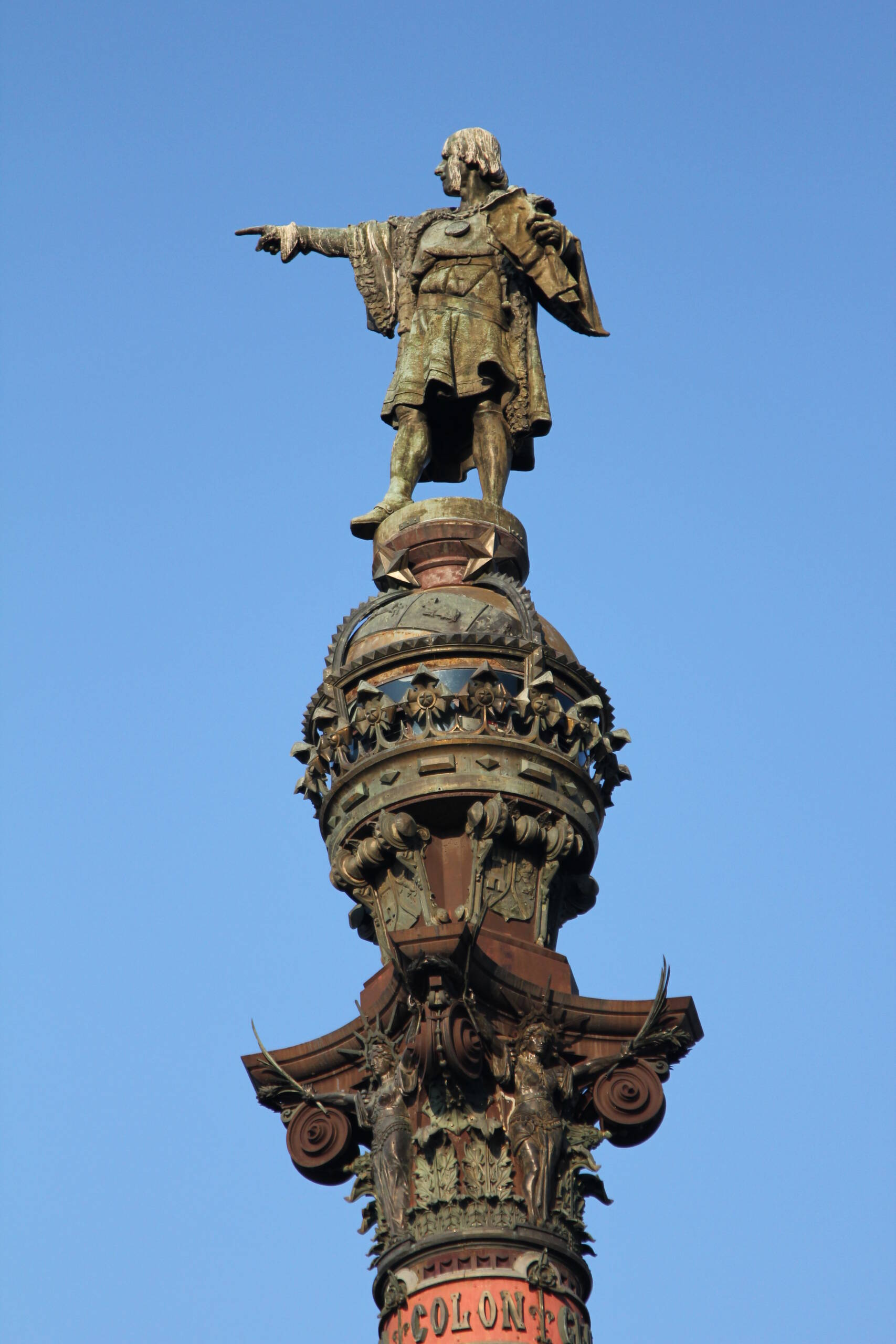You notice the gesture before you name the figure. That dramatic outstretched arm, the cloak caught in imagined wind, the grounded stance that suggests someone mid-speech or mid-epiphany. Then your eyes drop to the engraved word — COLON — and it aligns: this is Christopher Columbus, the historical symbol Spain chose to immortalize in metal and height, even if the truth of his legacy is more complicated than the pose suggests.

Once you realize it’s Columbus, the monument’s entire language becomes easier to read. The base isn’t just ornamentation — it’s heraldry, ambition, imperial symbolism, maritime identity cast into bronze. Shields, lions, winged figures and decorative scrolls form a visual myth of empire and exploration. The tall column feels like the mast of a ship, pulling your gaze upward until the sky and the figure blur into a single vertical story about oceans crossed and worlds redrawn.
It sits in the perfect place: the end of La Rambla, precisely where Barcelona opens into the port. History says Columbus presented his findings here after his first voyage, so the monument isn’t just decoration — it’s a statement piece on the threshold between land and sea. And then comes the fun part: the debate about the direction he’s pointing. Everyone assumes he gestures toward the Americas. He doesn’t. He points east, toward the Mediterranean — because the statue isn’t a compass, it’s symbolism in theatrical form.
Once you know who it is, the atmosphere deepens. Columbus isn’t a neutral figure anymore; he represents exploration and navigation, but also colonization and irreversible cultural upheaval. His celebration has changed tone depending on who’s telling the story. That tension becomes particularly noticeable around October 12, Spain’s National Day — a date tied to Columbus’s first landfall in the Americas. For some, it’s a commemoration of maritime achievement and the rise of a global empire. For others, it’s a reminder of the violent consequences of conquest and the centuries-long impact on indigenous peoples. Standing here, that duality hums beneath the bronze.
Tourists snap photos, argue about the pointing direction, check maps, laugh, or walk past without realizing the weight of the figure above them. Meanwhile the monument stays still, commanding yet strangely detached, as if the world around it — with all its debate, noise, and reinterpretation — is just another passing wave.
Sometimes travel is museums, tapas, sunshine, and wandering aimlessly through streets. Sometimes it’s pausing at something like this and realizing history isn’t just written in books — it’s right above your head, staring outward, waiting to be understood, questioned, or reimagined.
Leave a Reply